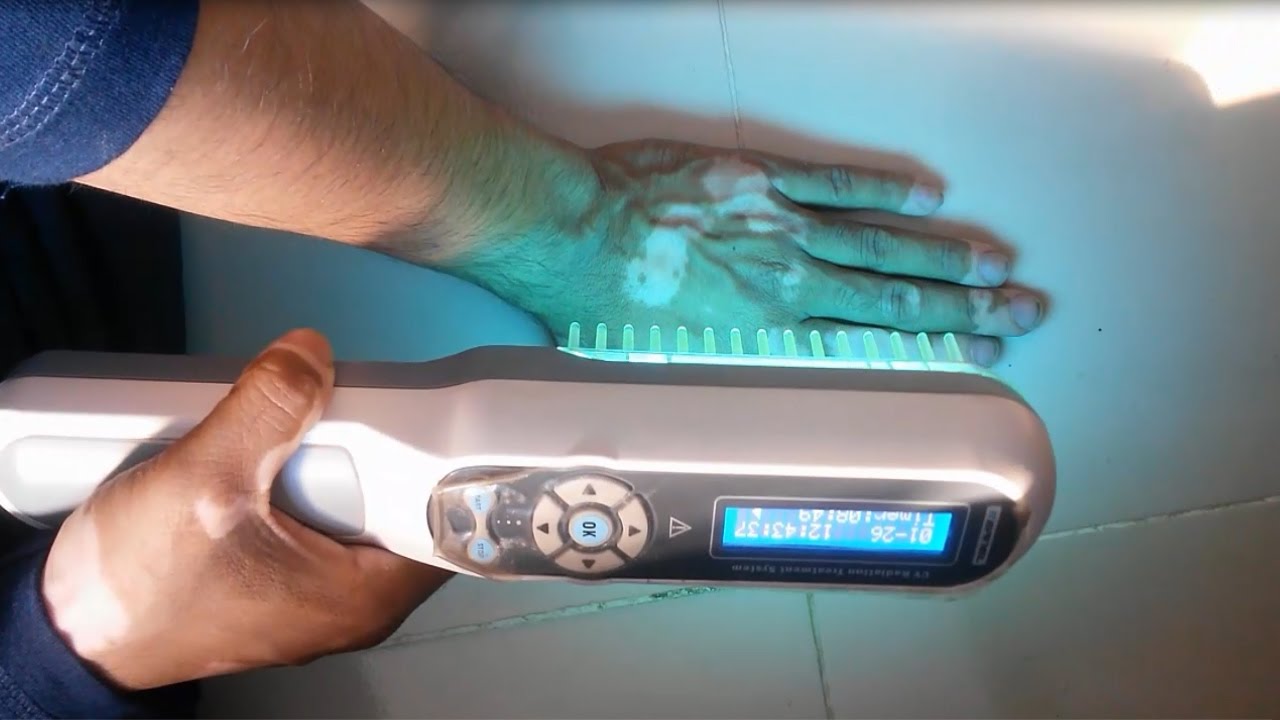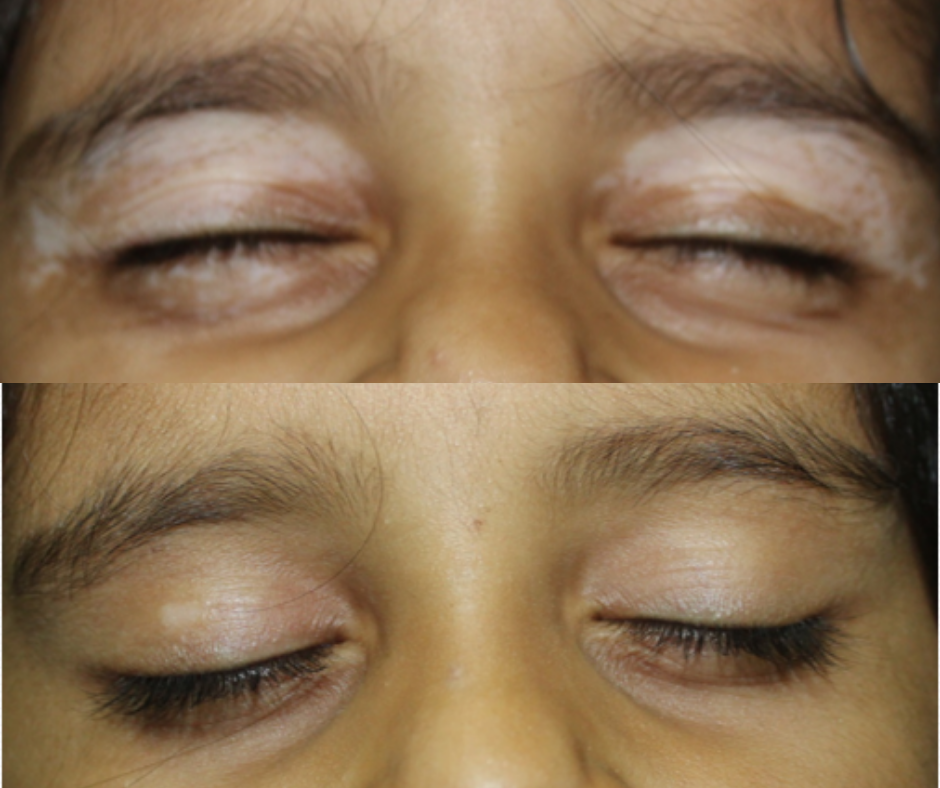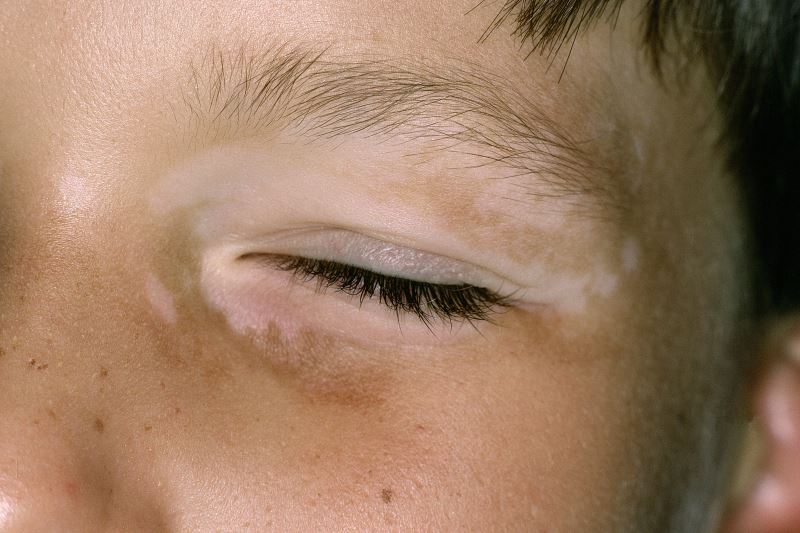VITILIGO
There are various options of treatment now available to stop progression of vitiligo and even regain the normal color of skin.
Vitiligo | सफेद दाग
Vitiligo is a long-term skin disease in which growing patches of skin lose their color. It can affect people of any age, gender, or ethnic group. The extent and rate of color loss from vitiligo is unpredictable. It can affect the skin on any part of your body. It may also affect hair and the inside of the mouth.
The patches appear when melanocytes within the skin die off. It can be stressful or make you feel bad about yourself.


Some Important Facts about Vitiligo
- Vitiligo is a long-term skin condition characterized by patches of the skin losing their pigment.
- Till now ,there is no permanent cure of Vitiligo and It is life long skin disease.
- The exact cause is unknown, but it may be due to an autoimmune disorder.
- Vitiligo is not contagious.
After- Before
Vitiligo is a chronic disease and it requires long-term treatment. If you will have patience and get regular treatment as advised by your doctor, It can be cured.


Symptoms of Vitiligo
The main sign of vitiligo is patchy loss of skin color. Usually, the discoloration first shows on sun-exposed areas, such as the hands, feet, arms, face and lips.
1. Patches of the skin losing their pigment (Colour of Skin)
2. Premature whitening or graying of the hair on your scalp, eyelashes, eyebrows or beard
3. Loss of color in the tissues that line the inside of your mouth and nose (mucous membranes)
4. Loss of or change in color of the inner layer of the eyeball (retina)
Vitiligo may start at any age, any gender, any types of people. It can be treated by medicines, ultraviolet light therapy, laser devices, various types of surgery, etc, But still, there is lot research going to get permanent cure for vitiligo.
Treatments available for Vitiligo
Many treatments are available to help restore skin color or even out skin tone.
If you and your doctor decide to treat your condition with a drug, surgery or therapy, the process may take many months to judge its effectiveness. If one treatment does situs slot gacor not show any improvement then sometimes Doctors require to try combination of treatment.
Medications
With advent of various research molecules in treatment of vitiligo, progression of vitiligo can be kept in check with help of topical creams and oral medicines
Medications
With advent of various research molecules in treatment of vitiligo, progression of vitiligo can be kept in check with help of topical creams and oral medicines
Creams that control inflammation: Applying a corticosteroid cream to affected skin may help return color, particularly if you start using it early in the disease.
Medications that affect the immune system: Ointments containing tacrolimus or pimecrolimus (calcineurin inhibitors) may be effective for people with small areas of depigmentation, especially on the face and neck.
Oral Medicines that stop nexus slot progression of disease: Oral corticosteroids, azathioprine, cyclosporine, methotrexate are immunomodulators that halt the progression of vitiligo.
Oral Medicines that help in re-pigmentation: Oral psoralens are helpful to achieve re-pigmentation in white patches when taken in combination with sunlight exposure or phototherapy.
Therapies
1. Photo Therapy (UVA and UVB) : Photo therapy is a method of UVA OR UVB light exposure on affected area. It requires to 1-5 minutes of light exposure and it should be done regularly for a long period as advised by doctors.
2. Excimer lamp/Laser: Excimer lamp or laser is light source of 308nm which is used for small patches and areas on face also.
Surgery
Surgery may be an option for you if light therapy doesn’t work. Surgery can also be used with those therapies. The goal of the following techniques is to even out your skin tone by restoring color.
1. Tattooing (micropigmentation). In this technique, your doctor uses a special surgical instrument to implant pigment into your skin. It’s most effective in and around the lips in people with darker complexions. Drawbacks include difficulty matching the skin color and potential for the tattooing to trigger another patch of vitiligo.
2. Skin grafting. In this procedure, your doctor removes very small sections of your normal, pigmented skin and attaches them to areas that have lost pigment. This procedure is sometimes used if you have small patches of vitiligo. Possible risks include infection, scarring, a cobblestone appearance, spotty color and failure of the area to recolor.
3. Blister grafting. In this procedure, your doctor creates blisters on your pigmented skin, usually with suction. He or she then removes the tops of the blisters and transplants them to an area of discolored skin. Possible risks include scarring and failure of the area to recolor. And the skin damage caused by suctioning may trigger another patch of vitiligo.
4. Mini Punch grafting .
5.Non cultured melanocyte transfer

